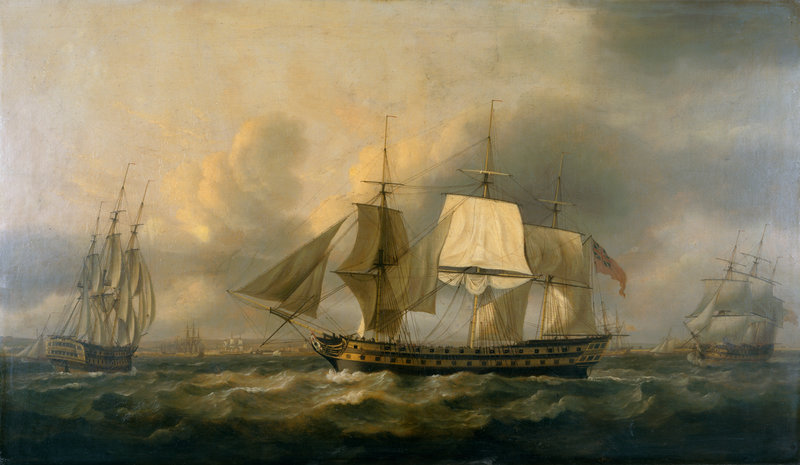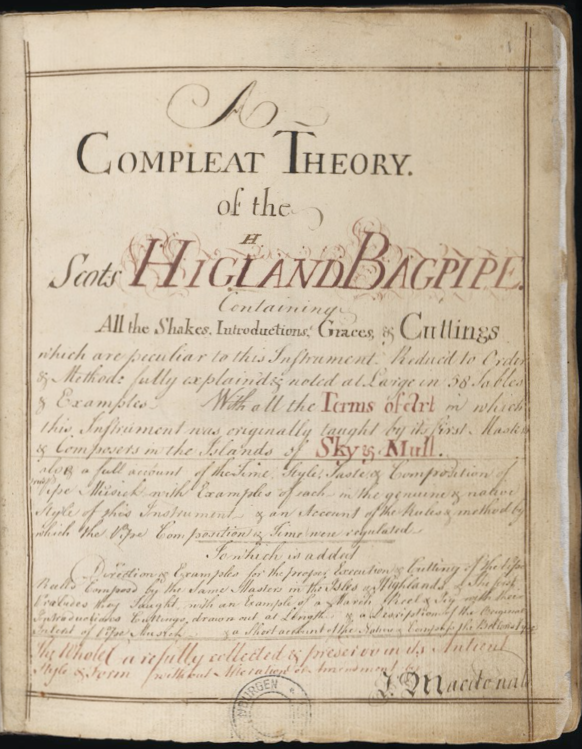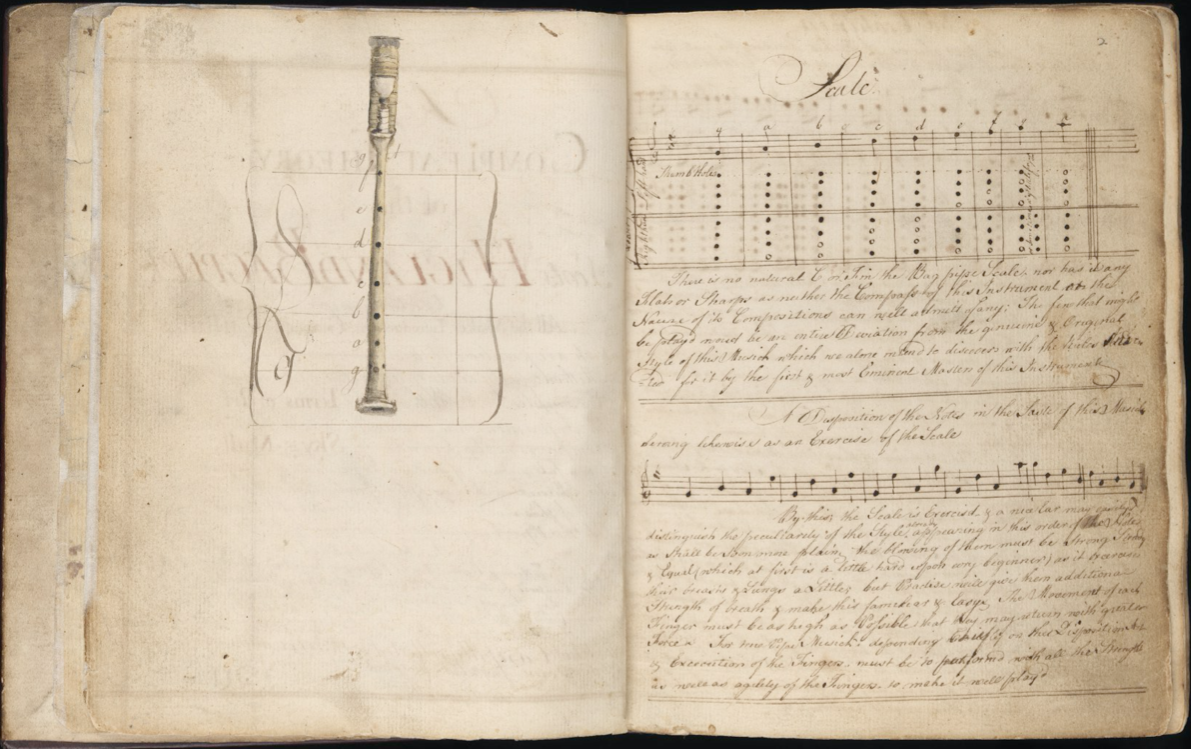
It is the beginning of the 1760's, and a young Joseph MacDonald is in the employee of the British East India Company (EIC) headed towards India. He was likely embarked on a EIC ship type called an East Indiaman which was a general name for any sailing ship operating under charter or license to any of the East India trading companies of the major European trading powers of the 17th through the 19th centuries. Imagine the sheer immensity of his fortitude to attempt to create A Compleat Theory of the Scots Highland Bagpipe armed with only whatever paper or parchment he could muster, a quill to write with, and some sand to soak up any excess ink, all while on the roiling seas on a sails driven wooden ship if he had the light to work on it. Unfortunately, Joseph would pass in 1763, at the age of twenty-three, resulting in one of Scotland's incalculable losses. All told, Joseph's contributions to the Scots Highland Bagpipe would result in the earliest printed collection of Gaelic Airs in Scotland by his brother, Patrick in 1784. Subsequently, Patrick would also publish a collection of bagpipe music that included his brothers Compleat Theory of the Scots Highland Bagpipe in 1803, which includes the earliest analysis of the structure of bagpipe musical tradition that anyone had ever attempted. The creation of this collection, under the conditions on which it was drafted in 1760 while on a wooden ship are astounding considering Joseph's mere twenty years of age at the time. For reference as to the era, the great Scottish poet Robert Burns would be born in 1759.
Vortex Street Music is thus extremely proud to announce the debut of Joseph MacDonald's A Complete Theory of the Scots Highland Bagpipe transcribed into a modern layout with both the text and music typeset reworked electronically into a more accessible format for the modern user. The creation of a modern transcription of this work was a long time goal of Campbell Naismith's goals and required hours of tireless work analyzing a copy of Joseph's work coupled with typing all of the words and typesetting the music itself.
For further information and to read the work itself please click on the this link to view or download the .pdf of the collection.
The original manuscript that was transcribed from can be found here.

